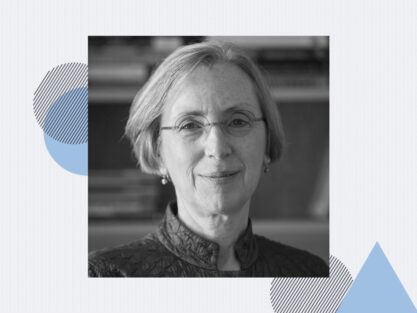February 2, 2020 – As an expert in implementation science, Karen Emmons, professor of social and behavioral sciences at Harvard T.H. Chan School of Public Health, has spent decades exploring how cancer research can be better translated into practice to reduce health disparities among disadvantaged groups. In a recent commentary, she and her co-authors argued that, to bring the full benefits of scientific discovery to health, implementation scientists should focus more on the policy-making process.
Q: What is implementation science and how might it be helpful in controlling cancer?
A: I like to think of it as the practice of taking what we know and making it what we do. Essentially, you take evidence-based knowledge and you integrate it into practice and policy. We’re actually very fortunate in that we have quite a lot of knowledge about how to prevent cancer and detect it early so it can be treated. We’re not great, however, in using that knowledge, which is the gist behind implementation science. We have the opportunity, for example, to take something like colon cancer screening or smoking cessation, which we know are really effective to help people reduce their cancer risk, and figure out how to make sure that people have access to those treatments wherever they get care. At the same time, we need to ensure that people wherever they live have opportunities to access healthy foods and healthy physical activities.
Q: What are the barriers to implementing evidence-based research as policy, and what could help overcome these barriers?
A: We’re really good at bringing research into clinical practice, but really lousy at using it to create policy. A lot of that is because people in implementation science come, like me, largely from the social change intervention development field, and have not historically known as much about policy. We don’t understand who the right players are, or how to engage with stakeholders to try and influence policy. For example, in tobacco control, we know that one of the most effective strategies is taxation of tobacco products, and yet that is the least used approach globally—and we don’t really understand why that is. We don’t stop and ask, what is the context in which tobacco taxes can be passed, where do they work, and what are the conditions you need to have to make them effective?
As implementation scientists, we need to learn what the policy-making process is. We tend to think very linearly, but political scientists know that’s not how policy works. We need to be more comfortable with ambiguity and a longer time process. We need to think about the different kinds of stakeholders that should come to the table, and we need to use different methods to engage them. We also need a better understanding of the “outer context”—what’s going on outside of the walls of the health center. We need to ask, “What are the economic conditions of the community, and what are the political processes at play?”
Q: What future research areas could implementation scientists explore to make policy implementation more effective?
A: We need to consider that there are lots of different policy levers that might help with the translation of evidence to policy—taxes, required data collection related to services delivered or people affected, and required training or certification for delivery of certain services. But too often in our field we focus on passing legislative bills and not how the tools themselves will be implemented. We need to think better about what instruments work best in which contexts, including non-governmental settings. For example, even without government intervention, employers can put policies in place to give employees paid sick time to use if they get COVID, or paid time off to get a colonoscopy or a mammogram to reduce their cancer risk. Or public health advocates can work with the corner store to provide more access to healthy food or restrict tobacco sales. Sometimes when those things happen, local government starts to pay attention and pass laws to extend the impact.
We also need to more actively consider how disadvantaged groups are going to be impacted by the policies we put in place. If we are rolling out resources that require traveling by car to a central location—as we saw with COVID testing and vaccination—or signing up for appointments over the internet, then there are whole groups of people who will not be able to access them. Thinking in advance about the kinds of partnerships and collaborations we need so everyone can benefit when policy gets put in place is absolutely critical when it comes to overcoming health inequities.
